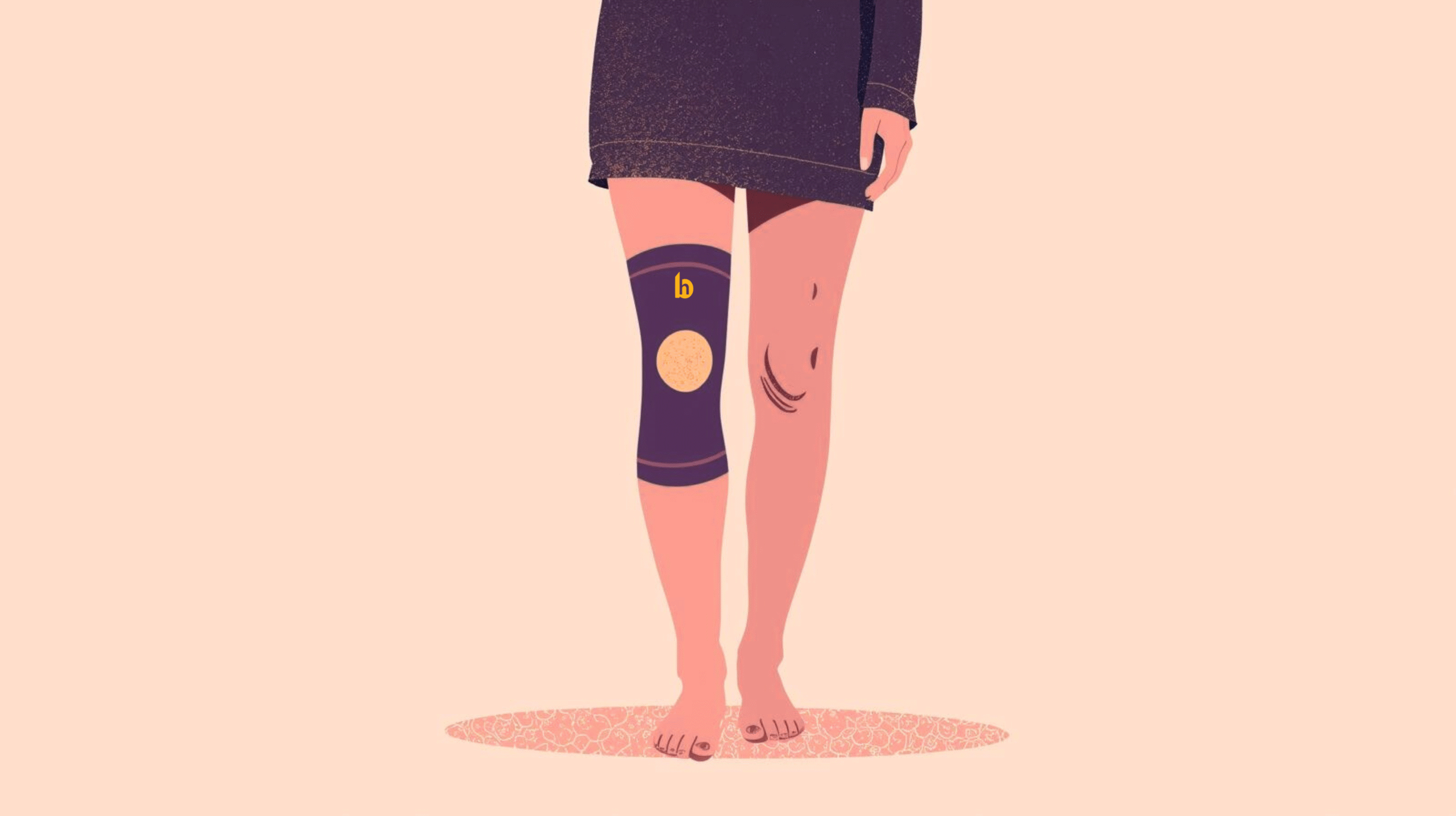Knee pain is one of the most common complaints across all age groups, whether it comes from arthritis, sports injuries, or everyday strain. For many people, the simple act of walking up stairs, squatting, or even sitting for long periods can become uncomfortable. That’s where knee compression sleeves come in a popular, non-invasive way to support the knee joint, reduce pain, and improve mobility.
But do they actually work, or are they just another fitness trend? Let’s break down the science, benefits, risks, and safe usage of knee compression sleeves so you can decide if they’re right for you.
What Exactly Is a Knee Compression Sleeve?
A knee compression sleeve is a stretchable fabric support worn around the knee joint. Unlike rigid braces, which restrict movement, sleeves are designed to provide gentle compression, warmth, and stability without limiting natural mobility.
These sleeves are commonly made from neoprene, spandex, or nylon blends, and they vary in thickness, length, and design. Some come with extra padding or patella (kneecap) stabilizers for additional support, while others are simple, lightweight sleeves suitable for everyday wear.
Unlike medical braces prescribed for ligament tears or fractures, knee compression sleeves are preventive and supportive, making them widely accessible to athletes, arthritis patients, and anyone dealing with mild to moderate knee pain.
The Science Behind Knee Compression Sleeves and Pain Relief
The effectiveness of knee compression sleeves comes down to biomechanics, blood circulation, and neuromuscular feedback. Here’s how they work:
1. Joint Stability and Support
Knee sleeves provide external support that reduces wobbling of the knee joint during movement. This helps stabilize the patella (kneecap) and prevent excessive side-to-side motion, which is especially useful during sports like basketball, running, or weightlifting.
2. Compression and Improved Blood Flow
The gentle compression applied by the sleeve enhances circulation around the knee joint. Better blood flow brings oxygen and nutrients to the tissues, while also reducing swelling and speeding up recovery after workouts or injuries.
3. Reduced Swelling and Inflammation
After intense exercise or minor injuries, fluid often accumulates in the knee joint. Compression sleeves help limit this buildup by applying even pressure, reducing post-activity soreness and inflammation.
4. Proprioception and Movement Awareness
Proprioception is your body’s ability to sense joint position and movement. Wearing a knee sleeve enhances proprioceptive feedback, making you more aware of your knee’s movements. This helps prevent awkward motions that could strain the joint.
5. Confidence and Psychological Support
Beyond physical support, knee sleeves provide mental reassurance. Many athletes and patients feel more confident performing activities when their knees feel “protected,” which can reduce hesitation and improve overall performance.
Benefits of Knee Compression Sleeves
Knee compression sleeves aren’t a magic cure, but they can make a significant difference when used correctly. Here are the main benefits:
1. Pain Relief from Arthritis and Injuries
People with osteoarthritis, rheumatoid arthritis, or old injuries often report reduced pain when wearing a knee sleeve. The warmth, compression, and stability combine to ease discomfort during daily activities.
2. Swelling Reduction and Faster Recovery
Whether from exercise-induced soreness or injury-related inflammation, sleeves help minimize fluid retention and swelling, speeding up recovery times.
3. Enhanced Sports Performance
Athletes use compression sleeves not just for injury prevention, but also to improve endurance and reduce fatigue. The enhanced blood circulation helps muscles recover faster between training sessions.
4. Injury Prevention During Activity
Knee sleeves provide extra protection during dynamic sports like football, running, tennis, or weightlifting. They reduce stress on the joint and lower the risk of sprains, strains, and meniscus aggravation.
5. Post-Surgical and Rehabilitation Support
Patients recovering from ACL surgery, meniscus repair, or knee replacement often use compression sleeves to manage swelling, improve mobility, and protect the joint during rehabilitation.
Risks and Limitations of Knee Compression Sleeves
While beneficial, knee compression sleeves are not without limitations:
1. Limited Structural Support for Severe Injuries
Sleeves cannot replace rigid braces or medical treatment for serious conditions like ACL tears, fractures, or severe meniscus injuries. They are best for mild to moderate support.
2. Over-Reliance Leading to Muscle Weakness
Constant use may cause people to depend too much on the sleeve, which can reduce natural muscle activation and strength over time. Strengthening exercises remain crucial.
3. Skin Irritation and Discomfort
Tight sleeves, especially when worn for long hours, may cause rashes, itching, or circulation issues. Choosing the right size and breathable material helps avoid this.
4. Not a Substitute for Medical Treatment
Knee compression sleeves are supportive tools, not cures. They cannot replace physical therapy, medication, or surgery where required. Consulting a doctor for persistent pain is essential.
Safe Usage Guidelines for Knee Compression Sleeves
To maximize benefits and minimize risks, follow these tips:
- Choose the Right Size: A sleeve too tight may cut circulation, while a loose one won’t provide enough support.
- Wear During Activity: Use sleeves during workouts, sports, or long walks, not necessarily all day.
- Take Breaks: Avoid wearing for extended hours unless recommended by a doctor.
- Wash Regularly: Sweat buildup can irritate the skin and reduce elasticity.
- Combine with Strength Training: Strengthening your quadriceps, hamstrings, and hip muscles is key for long-term joint health.
Who Should Use Knee Compression Sleeves?
Knee sleeves can be useful for:
- Athletes: Runners, basketball players, weightlifters, or anyone involved in high-impact sports.
- Arthritis Patients: To reduce pain and stiffness during daily movement.
- Post-Surgery Patients: For swelling control and confidence during rehab (with doctor’s approval).
- Elderly Individuals: To improve stability and reduce the risk of falls.
- Fitness Enthusiasts: For extra support during heavy squats, lunges, and HIIT workouts.
Final Thoughts
Knee compression sleeves are not miracle devices, but they can be powerful tools for pain relief, injury prevention, and performance enhancement when used properly. They work best for mild to moderate knee pain, arthritis, post-workout recovery, and sports support.
However, they should not replace medical treatment, strengthening exercises, or professional rehabilitation programs. Think of them as an assistant to your knees, not a cure.
Frequently Asked Questions:
1. Can I wear a knee sleeve all day?
It’s not recommended to wear them all day unless prescribed. Use them during activity or recovery periods, and give your skin and muscles time to breathe.
2. Do knee sleeves actually prevent injuries?
They can reduce the risk of sprains and overuse injuries by stabilizing the knee and improving proprioception, but they cannot prevent all injuries.
3. Are they effective for arthritis pain?
Yes, many arthritis patients report relief from stiffness and swelling thanks to the warmth and compression provided.
4. Can athletes use them for performance enhancement?
Yes, compression sleeves may boost circulation, reduce fatigue, and provide confidence during high-intensity sports.
5. Which knee sleeve is best for running or workouts?
Lightweight, breathable sleeves with firm but comfortable compression work best for running, while thicker neoprene sleeves or ones with patella support are ideal for weightlifting.
References:
- Godwin K. Dzidotor et al., “Functions and Effectiveness of Unloader, Patellofemoral, and Knee Sleeve Orthoses: A Review,” Regenerative Engineering and Translational Medicine, June 2024. Discusses how knee sleeves aim to stabilize movement, reduce pain, and improve proprioception, but emphasizes that clinical efficacy remains inconclusive due to methodological variability.https://pubmed.ncbi.nlm.nih.gov/38983777/
- Heidi Godman, Harvard Health Letter, December 1, 2024, Explains that a knee sleeve offers warmth, a sense of support, and compression to help reduce swelling and pain from osteoarthritis. https://www.health.harvard.edu/pain/can-a-knee-brace-ease-arthritis-pain
- In healthy active men, knee supports (braces or sleeves) did not significantly alter proprioception thresholds, suggesting context-specific effects. https://pubmed.ncbi.nlm.nih.gov/23726648/
- Damien Van Tiggelen, Clinical Journal of Sport Medicine, May 2008, Found that neoprene knee sleeves improve joint position awareness (proprioception), especially in individuals with poor proprioceptive acuity and after fatigue. https://journals.lww.com/cjsportsmed/abstract/2008/05000/the_effects_of_a_neoprene_knee_sleeve_on_subjects.7.aspx























